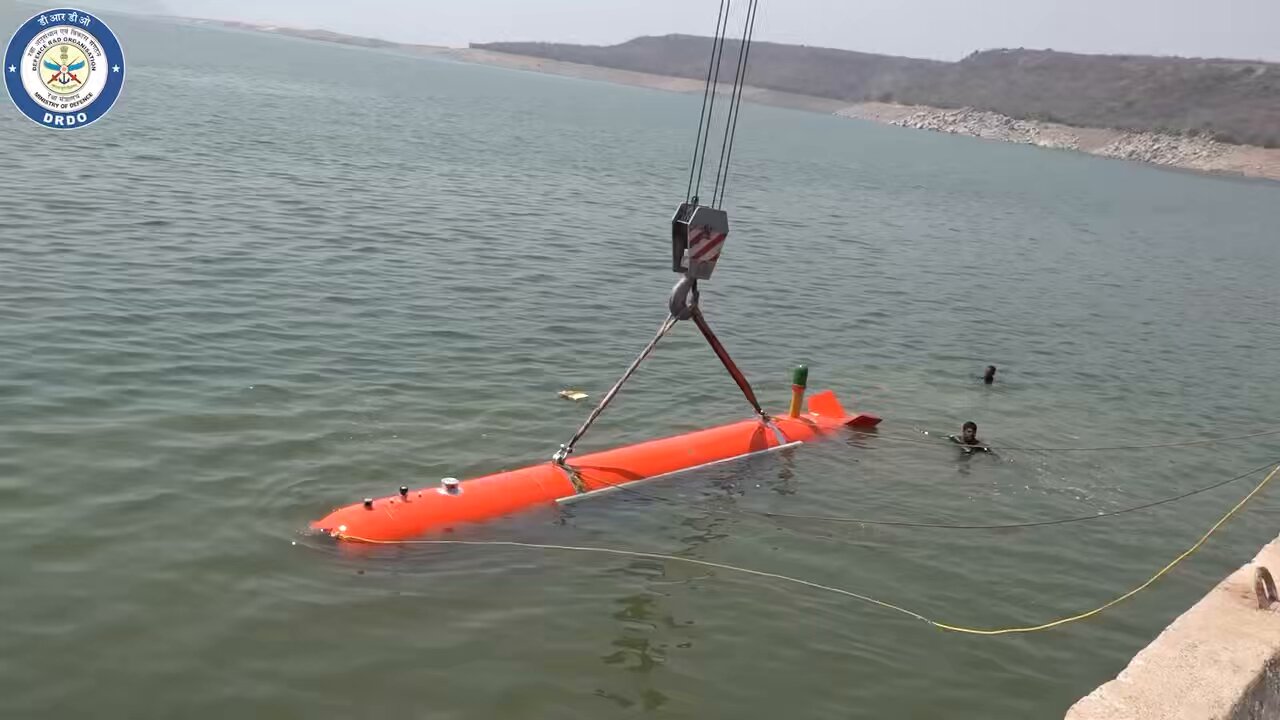SOURCE: AFI


In a significant stride toward bolstering India’s underwater defense capabilities, the Naval Science and Technological Laboratory (NSTL), a premier research arm of the Defence Research and Development Organisation (DRDO), has successfully tested its High Endurance Autonomous Underwater Vehicle (HEAUV) in a lake environment.
The trials, conducted as part of the vehicle’s ongoing development, demonstrated flawless performance across multiple runs, validating its dynamics in both surface and submerged conditions. With perfect functioning of its sonar and communication systems, the HEAUV is emerging as a promising asset for India’s naval ambitions, showcasing the nation’s growing prowess in indigenous defense technology.
The HEAUV, currently under development at NSTL in Visakhapatnam, represents a cutting-edge advancement in autonomous underwater systems. Designed for high endurance and versatility, this unmanned vehicle is intended to undertake extended missions, including anti-submarine warfare, mine countermeasures, and oceanographic surveillance. The recent lake trials mark a critical milestone, building on earlier surface runs conducted in March 2024 at Cochin Shipyard’s International Ship Repair Facility (ISRF) Jetty in Kochi, where the vehicle met all mission parameters.
The latest tests, conducted in a controlled lake setting, focused on proving the HEAUV’s operational capabilities across diverse conditions. Multiple runs assessed its performance both on the surface and underwater, with the vehicle demonstrating stability, maneuverability, and reliability. This success underscores NSTL’s progress in refining the HEAUV’s design and systems, bringing it closer to operational deployment.
A standout feature of the trials was the impeccable performance of the HEAUV’s sonar and communication systems. The sonar, essential for navigation, obstacle avoidance, and target detection in the murky depths, operated with precision, providing real-time data critical for autonomous decision-making. Equally impressive was the vehicle’s communication suite, which maintained seamless connectivity during submerged and surface operations. This dual-mode capability—using radio frequency on the surface and acoustic signals underwater—ensures robust command and control, a vital requirement for long-endurance missions.
The HEAUV’s ability to perform consistently across multiple runs highlights the robustness of its design. Weighing approximately 8 tons, as revealed during its maiden surface run in 2024, the vehicle is engineered for extended operations, with an endurance of up to two weeks. Its electric propulsion and advanced navigational sensors, including inertial navigation systems and forward-looking sonar, enable it to operate independently, locating its geographical position and evading obstacles with ease.
The successful lake trials position the HEAUV as a game-changer for the Indian Navy. With its high endurance and autonomous capabilities, the vehicle is well-suited for a range of strategic roles. In anti-submarine warfare, it could detect and track enemy submarines over vast oceanic expanses, while its mine countermeasure potential allows it to identify and neutralize underwater threats. Additionally, its capacity for prolonged surveillance makes it an invaluable tool for monitoring India’s maritime borders, particularly in the Indian Ocean Region, where security challenges are on the rise.
The HEAUV’s development aligns with India’s broader push for self-reliance in defense technology under the “Atmanirbhar Bharat” initiative. By creating an indigenous platform capable of rivaling foreign systems like the Boeing Orca XLUUV or the Kongsberg Hugin Endurance, NSTL is reducing India’s dependence on imports while fostering innovation in underwater robotics.
NOTE: AFI is a proud outsourced content creator partner of IDRW.ORG. All content created by AFI is the sole property of AFI and is protected by copyright. AFI takes copyright infringement seriously and will pursue all legal options available to protect its content.